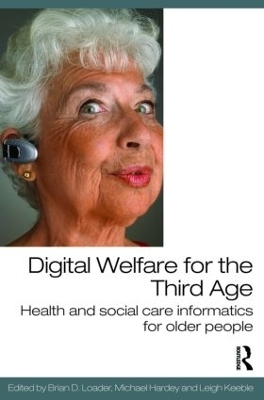
Digital Welfare for the Third Age
Routledge (Verlag)
978-0-415-45409-4 (ISBN)
This book is about the ways digital technology can contribute to the welfare of older people. The Internet, mobile phones and other technologies have changed how we live and work. Such technologies also shape how services for older people are organised in ways that potentially place carers and older people at the centre of service provision. Telecare can make homes ‘smart’ so that they are more comfortable and less risky for people who can take advantage of devices that help make them independent members of their community.
Digital Welfare is part of the broader project in Britain and elsewhere to adopt new information and communications technologies (ICTs) to organise and deliver health and social welfare services. This includes mundane technologies like an alarm to call for help to complex telecare ‘smart homes’ and electronic patient records. The intended and unintended consequences of such new technologies must be explored if we are to benefit from these innovations. Based on recent research this book seeks to highlight and examine the new opportunities and dilemmas that confront older people and all those concerned with their welfare in the network society.
This edited collection provides original contributions from leading academics and researchers in the field to access the evidence for improved professional integration and user-centred health and social care services for older people arising from health informatics. Digital Welfare for the Third Age will be of interest to all those working with older people.
Brian D. Loader is Co-Director of the Social Informatics Research Unit, Department of Sociology, University of York. Michael Hardey is Reader in Sociology at the Hull/York Medical School and the Department of Social Sciences at the University of Hull. Leigh Keeble is a Development Officer in local government, and previously a Research Fellow at the University of York.
1. Introduction Part 1: Towards Integrated Service Provision? 2. Are there Limits to the Integration of Care for Older People?3. Partnership in assessment? A case study of integrated information sharing Part 2: User-Centred Assessment and Autonomy 4. Perspectives on Telecare: Implications for Autonomy, Support and Social Inclusion 5. ICTs and Healthcare: User-Centred Devices and Patient Work 6. Networked carers: digital exclusion or digital empowerment? Part 3: Integrated User Design 7. Making sense of sensors: older people’s and professional caregivers’ attitudes towards telecare8. The performativity of a volunteer based telecare service 9. From have nots to watch dogs: understanding internet health communication behaviors of online senior citizens
| Erscheint lt. Verlag | 19.12.2008 |
|---|---|
| Zusatzinfo | 12 Tables, black and white; 5 Line drawings, black and white; 2 Halftones, black and white |
| Verlagsort | London |
| Sprache | englisch |
| Maße | 156 x 234 mm |
| Gewicht | 249 g |
| Themenwelt | Sachbuch/Ratgeber ► Gesundheit / Leben / Psychologie |
| Sozialwissenschaften ► Kommunikation / Medien ► Kommunikationswissenschaft | |
| Sozialwissenschaften ► Pädagogik ► Sozialpädagogik | |
| Sozialwissenschaften ► Soziologie | |
| ISBN-10 | 0-415-45409-3 / 0415454093 |
| ISBN-13 | 978-0-415-45409-4 / 9780415454094 |
| Zustand | Neuware |
| Haben Sie eine Frage zum Produkt? |
aus dem Bereich


